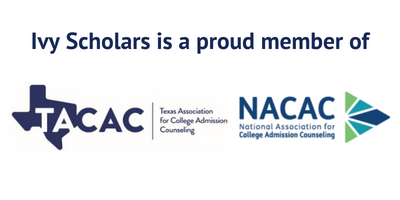College admissions is competitive, like really really competitive. This is especially true at the most prestigious schools, where acceptance rates have plunged below 5% in most cases. Of course, it wasn’t always like this; there was a time when simply attending the right high school and having a pulse was enough to get you accepted, as John F. Kennedy’s truly remarkable application to Harvard shows us.
So when did this change? And why? These are questions we get a lot, especially when helping our students apply to these remarkably competitive schools. In this article then, we’re going to look at some historical admissions data from a number of top colleges, to see how acceptance rates have changed over time, and what this information can tell us about college applications more broadly. Let’s jump right in!
A Note on Data
Our data comes from the Common Data Set, a collection of data compiled and released by universities. Different schools archive this in different ways, so our access to historical data does change from school to school. We will include as much data as we are able to find for each, but how much we can access does depend on the university in question.
Harvard’s Acceptance Rates Over Time
Harvard is one of the most competitive colleges for admission currently, and has been a leader of the pack for some time. Here is a graph where you can watch this trend intensify, tracking their number of applications and acceptance rate since 2008:
Worth noting, but not shown on this graph, is how application rates varied by gender over time;, male applicants exceeded female pens for most of this span; women surpassed men in number of applicants for the first time in 2018-19, they stayed close for a while, and then women ran away with the share of applicants beginning in 2021-22.
The table shows a clear trend, where the number of applications trended upward, and the acceptance rate trended down. The two were not perfectly tethered; between 2011 and 2016 application numbers stayed relatively steady, yet the acceptance rate still dropped slowly. The biggest jolts came due to the Covid pandemic, first causing students to reconsider applying, then driving new applicants when Harvard enacted test optional policies, before numbers fell off slightly when those policies were rescinded.
Yale’s Acceptance Rate Over Time
As Harvard’s longtime rival and counterpart, Yale is inevitably going to be the first point of comparison when it comes time to see how its admissions rates have changed over time. Here is a graph of the same information, tracking applications and acceptance rate since 2009:
Yale has another interesting pattern for gender in admissions not shown on this chart. For this entire period, they have received more female than male applicants, sometimes a lot more. Despite this, they have generally admitted more male than female students, with only a few years having the reverse; even then female students were admitted a disproportionately small amount compared to their application rate. Thus while this is the overall acceptance rate, we want you to be aware it is much harder to get into Yale if you are a woman.
The obvious thing that jumps out when looking at this graph is that something changed between 2009-10 and 2010-11. There is a similar, though smaller, jump in Harvard’s application rate at this point as well. Our guess is that this has to do with the economic recession that occurred in this period. As high school students surveyed the economic turmoil, many more decided to pursue college, especially top colleges that would land them the sort of jobs that might avoid that turmoil in the future.
Princeton’s Acceptance Rate Over Time
Princeton is the third of the big three schools, mentioned in the same breath as Harvard and Yale, but usually behind them, even as it is ranked as the best college as often as either of the others. They are a useful point of comparison for us, especially since they provide Common Data Sets going back to 2001. Here is what that looks like graphed out:
Princeton’s rate of applicants by gender has fluctuated over time, but they generally receive more male than female applicants. In general, their acceptance rates by gender correlate to the number of applicants, though in some years female applicants have been slightly advantaged. There is, however, not enough of a pattern here to say with certainty whether one gender has an admissions edge.
This chart is interesting, and illustrates a good point, when compared to the ones for Harvard and Yale; while the broad trends are the same, very few things impact all colleges at once and in the same way; applications may spike for Harvard and dip for Princeton, or vice versa. Covid and its impacts were an exception to this trend of course, but few other things were.
One interesting trend is that even when application rates stabilize (or decrease slightly) acceptance rates often still continue to decline. The consistency of decrease for acceptance rates is one of the most striking parts of this chart, save for the anomalous year of 2022-23; we aren’t entirely certain what happened there. Still, this points to deliberate efforts in the admissions office to keep acceptance rates low, rather than having them fluctuate with application rates.
Stanford’s Acceptance Rate Over Time
Stanford isn’t one of the Ivy League schools, but is quite often mentioned in the same breath as them, and held in the same high regard. They are quite like the Ivy League, both in terms of the quality of their academic offerings, and in the competitiveness of their admissions process over time, as you can see on this graph:
Not shown on this chart, but worth noting, is that more men than women have applied to Stanford consistently across this entire span of time. This gap ranges in size, but exists in every year. How Stanford has handled this has varied, but in more recent years, they have admitted slightly more women than men, meaning the acceptance rate for women is very slightly higher than what is shown on this chart (though still cannot be qualified as high).
This chart is interesting, as with only a few exceptions, the number of applications have increased and the acceptance rate has decreased at Stanford every single year. The exceptions come during the exceptional time of Covid; the major drop in the uncertainty of the 2020-21 admissions cycle, and another shuffle as things return to normal.
Most people who work in admissions are hopeful there is some ceiling for application numbers, and a floor for acceptance rates. What this Stanford data suggests, however, is that we have not found either yet. It is hard to imagine that admissions can get more competitive than they already are for top schools, and yet Stanford’s acceptance rate continues to decline. Not precipitously perhaps, but going down nonetheless.
What Does This Data Tell Us?
So now that we’ve seen how admissions rates have changed for these elite schools over the past decade or so, what have we learned? First, that headlines aren’t exaggerating, it really is harder than ever to get into a top college. We all had some sense of this of course, but seeing the acceptance rates drop so sharply at schools across the board is still striking.
Next, there is the sense that colleges do manipulate their acceptance rates to some extent; as applications hold steady for a few years but acceptance rates continue their decline in several of the schools above, often in different periods. There is a reason for this of course; schools are as motivated by their appearance as anyone, and being perceived as elite is something they chase. Thus even as these schools bemoan how competitive and stressful applications have become for students, they continue to actively contribute to the problem.
Finally, there’s no way of knowing if we have reached the end of this process yet. Some of these schools do seem to be levelling off when it comes to their acceptance rates, but we can look back in the data and see that has happened before as well. Only time will tell where admissions will go from here, but we can safely predict it will be extremely competitive for many years to come.
Final Thoughts
It can be disheartening at times to look at how admissions worked in days of yore, and then compare that to now. (Of course, 2008 is hardly days of yore, or perhaps I’m just getting old). Admissions rates have plunged so low, and application numbers gotten so high, that it can feel like an impossible challenge to get into one of these great universities, even for the best students.
That’s where Ivy Scholars can help. We have mastery over every aspect of college admissions, and have the knowledge needed to advise you on every step of the process. We use this to help students like you know how to approach college applications, and to give you the best shot of getting accepted at these very competitive schools. Schedule a free consultation today to learn how we can help you increase your own odds of acceptance; we’ve helped hundreds of students on the path to top universities, and are always happy to hear from you.








